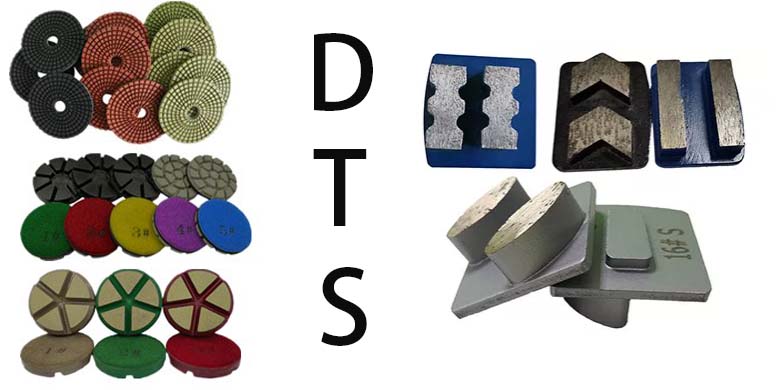Application areas of diamond tools2022-07-12
Diamond tools have excellent adaptability in the processing of non-ferrous metals and wear-resistant materials.
DTS Diamond Tools is a professional manufacturer of diamond tools for concrete or stone floor grinding and polishing, we have supplied many different kinds of diamond tools for many customers, such as Scanmaskin tools, Lavina tools, Klindex tools, Husqvarna tools, HTC tools etc. Welcome to consult for our products by clicking pictures to get into our official web if you are interested.
Among tool materials, diamond is the hardest. Under suitable processing conditions, diamond has a longer service life than high-speed steel, cemented carbide, ceramics and polycrystalline cubic boron nitride. It also has the disadvantage that it is generally not suitable for the processing of ferrous metal materials. But in high-speed, high-volume production, machining materials such as aluminum and graphite, diamond is often the most effective tool.
When working with diamond tools, users have two options: one is polycrystalline diamond (PCD), and the other is the newer chemical vapor deposition (CVD) diamond.
Polycrystalline diamond has the hardness, strength and wear resistance of natural diamond, but does not have the susceptibility of natural diamond to breakage. It is made of artificial diamond particles aggregated under high temperature and high pressure. During the process, the polycrystalline particles are simultaneously integrally bonded to a cemented carbide substrate to improve mechanical strength and impact resistance.
PCD is very suitable for high-speed cutting of aluminum, especially for occasions where good surface roughness is required. It also shows excellent performance when machining high wear-resistant materials. In general, PCD is recommended for cutting high-silicon aluminum alloys, but also for machining brass, copper, bronze, and carbide. The operations used include turning, boring, profiling, grooving, milling and hole machining.
PCD is generally not suitable for machining
ferrous materials due to the chemical interaction between diamond and iron. But
it can handle bimetallic materials, including combinations of aluminum and cast
iron. For example: an auto parts supplier uses a cartridge face milling cutter
with a diameter of 305mm, a tool nose arc of 2.36mm, with a wiper, a cutting
speed of 304.8m/min, and the blade only needs to be indexed once after
processing 5000 cylinder blocks.
The application of PCD is driven by the increasing
processing speed of aluminum parts in the high-volume production industry,
mainly the automotive industry. At the same time, automakers are evaluating
metal-matrix composites, which are all processed with PCD, in order to reduce
weight and cost. These types of materials cannot be machined with carbide tools.
PCD tools bring many benefits to the
machining process, both in terms of application range and productivity.
Although diamond is the hardest material in existence, its material properties
and toughness still require further study. One factor that improves the
toughness of PCD is the addition of cobalt to the random non-orientation of the
diamond grains. In addition, the cemented carbide substrate can also
mechanically support the diamond abrasive layer, thereby increasing the impact
resistance and facilitating brazing in tool manufacturing.
Another benefit of PCD is that the existing range of various grades can already meet the needs of any non-ferrous metal processing use. Generally speaking, fine-grained diamond is used in applications where the wear resistance of the material to be processed is low and the surface roughness is very high; medium-grained diamond is generally used as a general grade for machining; materials, but the surface roughness requirements are not high.
- Company Info
- Feedback
- Customer Reviews
- About Us
- Contact Us
- Blog
- Help Center
- User Center
- Forget Password
- My Orders
- Tracking Order
- My Account
- Register





